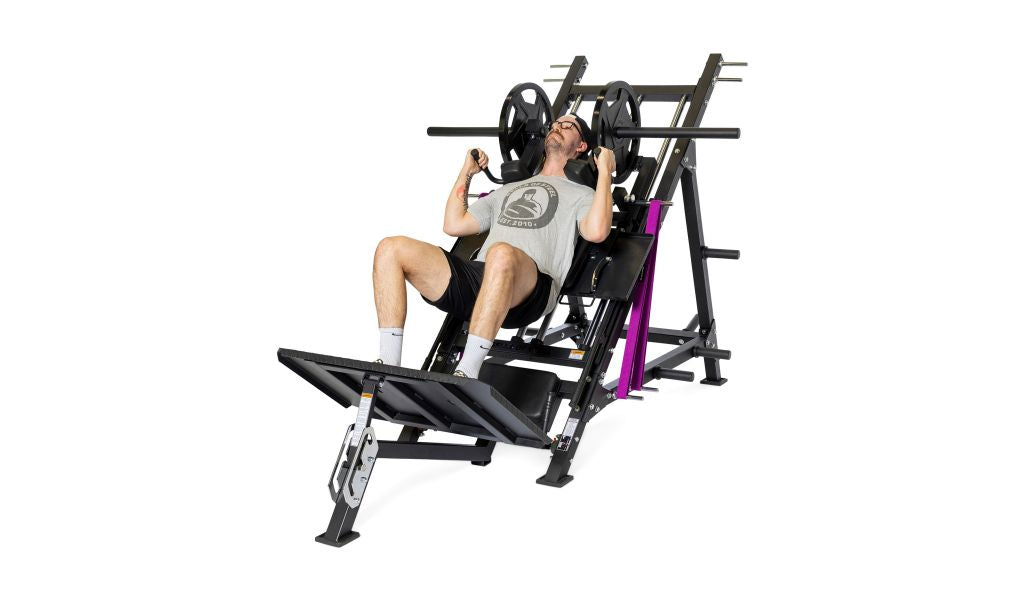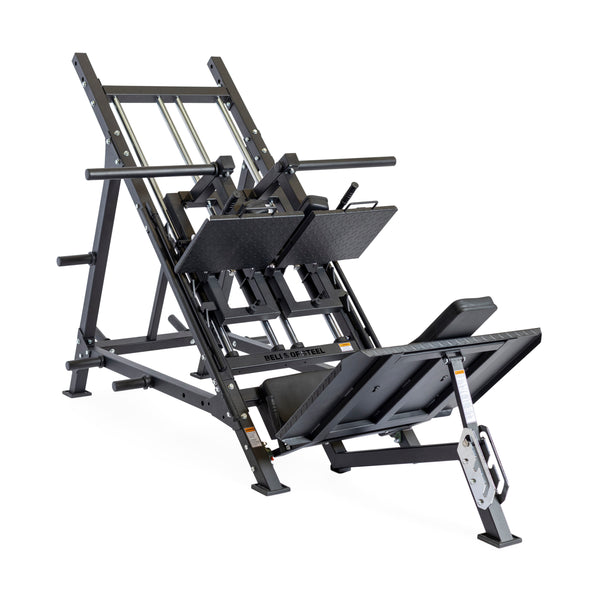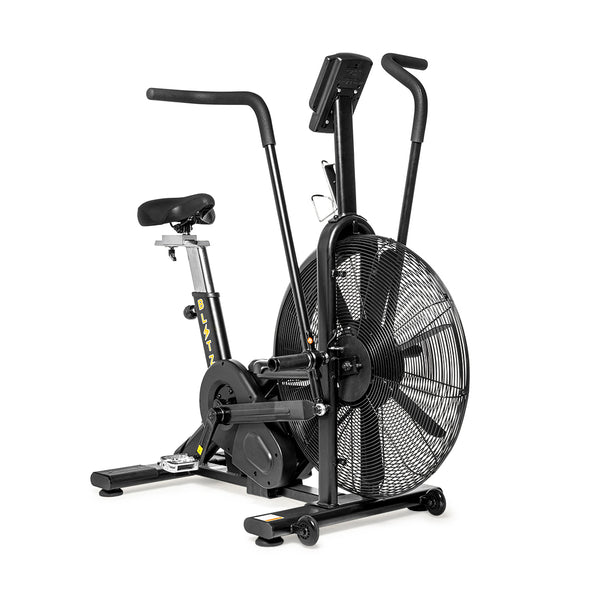If you’re tall, you already know that finding gym equipment that fits can feel like trying to squeeze into a child-sized hoodie. From whacking your head on pull-up bars to folding yourself onto too-short benches, being above average height has its perks… but it’s not one when it comes to gym design.
The good news? With a little planning (and some tall-friendly gear), you can build a home gym that fits your frame perfectly; no stooping, ducking, or scraping ceilings required.
The Height Challenge: Why Home Gyms Can Be Tricky for Tall Lifters
In the U.S., the average male height is around 5'8" and the average female height is 5'3", which means most gym equipment is built with those averages in mind. So if you’re 6' or taller, standard setups can feel cramped fast.
Tall lifters often face issues like:
-
Low ceilings making pull-ups, presses, and overhead lifts tough.
-
Short benches that don’t support your full back or leg length.
-
Cable pulleys that limit your range of motion.
-
Pull-up bars that are positioned for people who think 5'10" is “basically six feet.” (Stop rounding up, you’ll be fine.)
But don’t worry: there are plenty of ways to make your space work smarter for your height.
Smart Gym Setup for Tall Lifters
1. Pick the Right Rack Height
Rack height can make or break your setup. A short rack may save ceiling space, but you’ll end up crouching for pull-ups and presses.
If your ceiling height allows, go for the Manticore Power Rack or Hydra Power Rack. Both come in 90” and 108” tall versions. The extra height gives you more headroom for pull-ups and overhead lifts without hitting the top crossmember.
If you’re stuck with low ceilings, a short rack version can still work: just mount a standalone pull-up bar higher up on a wall or ceiling elsewhere in the room for full range of motion.
2. Ceiling Too Low? Think Outside the Room
If your basement has low ceilings, don’t force it. Instead, move your main setup to a spot with better clearance—like:
-
A garage gym: Often has higher ceilings and better ventilation.
-
A main-level room or unfinished area: You’d be surprised how well a power rack blends with “industrial chic.”
-
An outdoor setup: Mount a pull-up bar or ring station outside and enjoy your fresh-air gains.
Just make sure the area is flat, level, and weather-protected if you’re training outdoors.
3. Gear That Works Well for Tall People
Not all gym gear is created equal. Some Bells of Steel favorites make life a lot easier for the vertically gifted:
- Oblivyon Cable Tower (90” tall): The added height and adjustable pulleys mean you won’t get cut short on range of motion. Great for longer arms.
- Juggernaut ISO Leg Press Hack Squat Machine: A solid option for building lower body strength without ceiling restrictions. The adjustable seat and sled travel are friendly for longer legs.
- Manticore or Hydra Racks: Available in multiple height options, so you can match your rack to your room instead of the other way around.
- Standalone Pull-Up Bar: Mount it on the wall or ceiling for proper clearance, even if your main rack sits in a shorter space.
4. Cardio Equipment That Actually Fits You
Tall lifters often struggle with short stride lengths and cramped handles on cardio machines. Skip the compact treadmills and try:
-
Blitz Manual Treadmill: A curved, self-powered treadmill with a natural stride length.
- Blitz Air Bike: Add a seat extender for better leg range and knee comfort. Perfect for conditioning without the height headaches.
5. Bench and Barbell Setup
A longer bench—around 50 inches or more—helps taller lifters keep full back and hip contact during presses. Pair it with a 7-foot Olympic barbell for proper hand spacing and rack clearance.
Avoid compact benches and short barbells meant for tight spaces—they’re not built with long-limbed lifters in mind.
Tips for Maximizing a Tall-Friendly Home Gym
-
Measure before you buy: Ceiling height, rack height, and your standing reach matter more than brand names.
-
Mount pull-up bars separately: Keeps your rack compact while freeing up headroom.
-
Don’t overfill your space: Tall people need more movement room—especially for pressing and lunging.
-
Go vertical smartly: Use wall-mounted storage for plates, barbells, and accessories to preserve floor space.
-
Consider garage flooring: Rubber mats or stall mats keep equipment stable and reduce impact stress on long legs and backs.
FAQ: Building a Home Gym for Tall People
What ceiling height is best for tall lifters?
If possible, aim for at least 9 feet of clearance. You can train comfortably with 8-foot ceilings, but overhead lifts may need to be seated instead.
How do you do pull-ups with low ceilings?
Mount a wall or ceiling pull-up bar higher up in the room or outside if space allows. You can also use gymnastic rings or a cable tower for vertical pulling movements.
What’s the best Bells of Steel rack for tall people?
The Manticore and Hydra racks (90”-108” version) are ideal. They offer plenty of height for overhead lifts and pull-ups without feeling cramped.
Can tall people use the Blitz Air Bike or Blitz Treadmill?
Yes, both are tall-friendly. The Blitz Air Bike with a seat extender or Blitz Manual Treadmill gives you full stride and comfort without ceiling concerns. The Residential Wooden Treadmill is more compact and not ideal for long strides.
Should tall lifters avoid basements?
Not always, but if your ceiling is under 8 feet, you’ll be better off in a garage or unfinished space with more clearance. You can do plenty of work down there, but overhead lifts might give you a skylight where you don’t want one.
The Long and Short of It
Being taller than average can be a bit of a logistical nightmare when figuring out which gym equipment to buy and where to put it so you don’t smash through your ceiling. With some careful measurements, planning, and the right gear, you can get a pretty solid workout (even from way up there).




